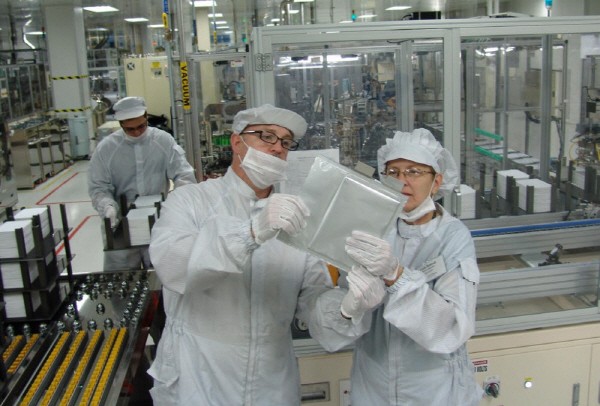

LG Energy Solution will make a large-scale investment of 15.1 trillion KRW in the Ochang plant by 2030. The Ochang plant is the first plant in Korea to mass-produce lithium-ion batteries, and it is responding to domestic and overseas demand for batteries for electric vehicles, energy storage systems (ESS), and information technology (IT). It is interpreted as an investment that strengthened cooperation in battery materials, parts and equipment while accelerating the development of next-generation batteries.
Jonghyun Kim, president of LG Energy Solution, announced on the 8ththat they will invest a total of 15.1 trillion KRW by 2030 to make the Ochang plant in Chungbuk province as a hub for Korean battery technology and expert.
President Jaein Moon announced the 'K-battery development strategy' at the Ochang plant on the same day to make Korea a world-class battery manufacturer. As part of that, LG Energy Solution announced key tasks and investment strategies.
President Kim said, “LG started mass-producing lithium-ion batteries for the first time in Korea. After applying batteries to Hyundai Motor’s hybrid (HEV) vehicle for the first time in the world in 2009, it has secured the world’s largest number of global automakers as customers.The company has proven its competitiveness in the electric vehicle battery market by securing 24,000 battery related patents, the world's largest market share, and the world's largest production capacity."
LG Energy Solution's current EV battery order backlog has exceeded 180 trillion KRW. In order to solidify the world's number one position in the next-generation battery market, President Kim promoted three major tasks: △ Establishment of a domestic R&D and production technology hub △ Fostering battery experts and researchers through the establishment of 'LG IBT' △ Reinforcement of materials, parts and equipment value chain. With these three major tasks, they plan to play a leading role in the domestic leading battery manufacturer.
In addition, the company plans to invest 15.1 trillion KRW with LG Chem by 2030 and create 8,000 domestic jobs.

LG Energy Solution will first invest 12.4 trillion KRW in the development of next-generation battery technologies such as lithium-sulfur batteries by 2025 and solid-state batteries by 2027 and expansion of production lines. As part of that, a pilot facility for the development of next-generation batteries will be built by 2023. They plan to spread the accumulated technology at the oversea production factories.
The Ochang plant has a battery production capacity of 17 Gigawatt hours (GWh). The production alone reaches 6,700 employees. LG Energy Solution will establish the LG IBT (Institute of Battery Tech) in Ochang Plant 2 to foster next-generation battery experts. LG Energy Solution is the first to establish a professional educational institution in the industry. LGIBT is a place where 400 people can train, and construction is scheduled to start at the end of this year with the goal of completion by 2023.
President Kim said, “Excellent manpower is the foundation of battery technology. We will establish LGIBT at the Ochang plant to focus on nurturing the next-generation battery specialists.”
Daejeon R&D Campus plans to develop differentiated products through next-generation battery materials such as high nickel cathode materials and silicon anode materials and future process innovation. LG Energy Solution plans to build an additional research building in Daejeon by 2023.
LG Energy Solution will also strengthen cooperation with domestic materials, parts and equipment companies. LG Energy Solution is expanding the proportion of localization of materials, parts and equipment. According to the industry, the internalized proportion of materials, parts, and equipment by LG Energy Solution reached 43%, 72%, and 87%, respectively.
President Kim said, “We will further spur technology development, investment, and cooperation so that 'K-Battery' can maintain its global number one status.”

By Staff Reporter Jiwoong Kim (jw0316@etnews.com)